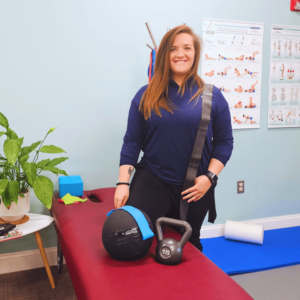Sciatic Nerve pain, commonly referred to as Sciatica, can be almost instantly debilitating and greatly affect your quality of life. Unfortunately, if you have it, or have had it, you would not be alone in that it’s estimated that 10% – 40% of the population suffer from Sciatic Nerve pain at some point in their lives.
While the causes of the pain may vary, there are non-surgical ways you can treat it that don’t involve pain medication. Medications and injections may decrease the pain temporarily, but they may also prolong recovery if it leads you to avoid proper mobilization and strengthening of the injury. Any treatment of sciatica and nerve pain should include active care and rehabilitation to restore mobility and stability.
What is the Sciatic Nerve?
The Sciatic Nerve is the largest and longest nerve in your body, branching from your lower back, through your hips and buttocks, and running down each leg to your toes.
Sciatic nerve pain can be caused by tension or inflammation of the nerve anywhere along its long path from the lumbar spine to the foot. True sciatica usually presents as sharp stabbing pain or numbness radiating from the lower back to the foot.
It’s very important to know that leg pain alone does not equal “sciatica.” Strain or tightness in the hamstrings, glutes, and foot muscles are often incorrectly diagnosed as sciatica. Unfortunately this often leads to unnecessary scans, and delays appropriate care.
How Can Sciatic Nerve Pain Be Treated?
Sciatica may improve and resolve on its own. Even sciatica caused by disc herniations can heal over time, usually several weeks to months. However, if the pain is significantly limiting your daily activities, sleep, or you are noticing increasing numbness or weakness, proper evaluation and treatment is essential to avoid additional loss of function and nerve damage
The good news is that there are exercises that you can do in the convenience of your own home that can help give you relief from your Sciatic pain. Some of the best exercises you can do include:
The Reclining Pigeon Pose
A popular yoga pose, the Reclining Pigeon helps stretch the muscles around the Sciatic Nerve that sometimes become inflamed. It requires you to:
- Lie on your back and bring your right leg up to a right angle while clasping both hands behind your thighs.
- Next, lift your left leg and place your right ankle on top of your left knee.
- Hold the position.
- Repeat with your other leg.
Knee to the Opposite Shoulder
This is a simple stretch that loosens the muscles around the Sciatic nerve that could be pressing against it. For this stretch, simply:
- Lie on your back and extend your legs with your feet flexed up.
- Bending your right leg, clasp your hands around your knee.
- Pull your right leg toward your left shoulder. Hold gently in place for 30 seconds. NOTE: You shouldn’t feel pain with this stretch.
- Push your knee so your leg returns to its original position.
- Repeat for 3 reps before switching legs.
Basic Seated Stretch
This simple stretch begins by sitting in a chair. Next:
- Cross the leg causing you pain over the knee of your other leg.
- Bend forward with your chest trying to hold your spine straight. NOTE: Bend as far as you can but STOP if you feel any pain.
- Hold the position for 30 seconds.
- Repeat with your other leg.
Groin Muscle Stretch
This exercise requires you to sit on the floor with your legs straight out in front of you. Then:
- Spread your legs as far as you can with one leg behind you and one leg bent in front of you.
- Placing your hands on the floor in front of you, angle your torso toward the floor.
- Lean forward, placing your elbows on the floor.
- Hold the position for 20 seconds.
While you may often find relief from pain with these home exercises, if your pain persists, seeing a trained professional such as a chiropractor is another great alternative therapy to help with your Sciatic pain.
What Will a Chiropractor Do for My Sciatic Pain?
As stated earlier, Sciatic Nerve pain can be debilitating, but a chiropractor can help you feel better with a combination of treatments geared toward increasing mobility and strength. These may include
- Spinal adjustments to help restore proper mobility, strength and stability in your spine and joints. This can help decrease pressure on the discs and nerves exiting the spine.
- Microcurrent to decrease inflammation and pain, and stimulate healing of injured tissues
- Massage of the surrounding muscles that may be inflamed and causing you pain
- Strengthening and stretching exercises to stabilize your spine and relieve tension on the nerve
- Ergonomic and activity advice to minimize or prevent future occurrences.
If your quality of life is being affected due to Sciatic Nerve pain, don’t delay in booking an appointment with Frederick Chiropractic Wellness Center today. Let’s work together to find the right combination of treatments that will help you move better and feel better soon.





